
Caspar David Friedrich was a 19th-century German Romantic landscape painter, generally considered the most important German artist of his generation. He is best known for his mid-period allegorical landscapes, which typically feature contemplative figures silhouetted against night skies, morning mists, barren trees or Gothic ruins. His primary interest was the contemplation of nature, and his often symbolic and anti-classical work seeks to convey a subjective, emotional response to the natural world. Friedrich's paintings characteristically set a human presence in diminished perspective amid expansive landscapes, reducing the figures to a scale that, according to the art historian Christopher John Murray, directs "the viewer's gaze towards their metaphysical dimension".

Jacob Philipp Hackert was a landscape painter from Brandenburg, who did most of his work in Italy.

Joseph Anton Koch was an Austrian painter of Neoclassicism and later the German Romantic movement; he is perhaps the most significant neoclassical landscape painter.

Johann Christian Reinhart was a German painter and engraver. He was one of the founders, along with Joseph Anton Koch, of German romantic classical landscape painting.

Georg Heinrich Brandes was a German painter.
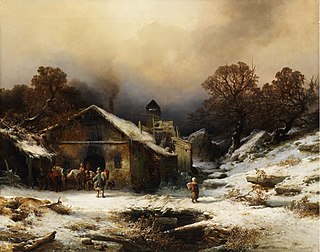
Richard Augustus Zimmermann, genre and landscape painter, was born in Zittau in 1820.

Jakob Alt was a German painter and lithographer.
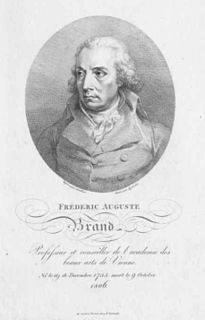
Friedrich August Brand was an Austrian painter.
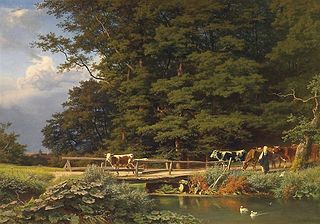
August Bromeis, a landscape painter, who was born at Wilhelmshöhe in 1813, first studied in the academy of his native town, then at Munich, from 1831 to 1833, in which year he went to Rome, where he was much influenced by the style of J. A. Koch. Bromeis returned to Germany in 1848, and resided at Frankfurt am Main and Düsseldorf, and at Cassel [sic], where he was made Instructor and Professor of Painting at the Academy in 1867. He died at Cassel in 1881. His most successful pictures were idealized landscapes, for example:
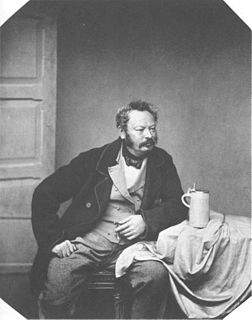
Heinrich Bürkel (1802–1869) was a German genre and landscape painter

Eugène-Ferdinand Buttura (1812–1852) was a French historical landscapist.

Franz Ludwig Catel was a German painter. He spent most of his career in Rome.
Peter Caulitz (c.1650–1719) was a German painter of landscapes and animals, especially domestic fowl. Born in Berlin, he studied in Italy, and was a court painter to Frederick the Great.

Bernhard Fries was a German landscape painter. He is associated with the Düsseldorf school of painting.

Heinrich Dreber, known as Franz-Dreber, was a German landscape painter.
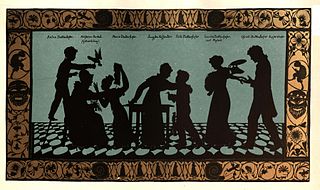
Christian Friedrich Traugott Duttenhofer was a German engraver.

Johann Joachim Faber was a landscape painter who was born in Hamburg. He worked originally at historical subjects, and painted the altar-piece, Suffer Little Children to come unto Me, for St. Catharine's Church at Hamburg. On his journey to Italy in company with J. A. Koch and Reinhardt, he was induced to adopt landscape painting, in which line he is best known. The Berlin Gallery contains a View of the Capuchin Monastery, near Naples, by him (1830). He died in Hamburg in 1846.
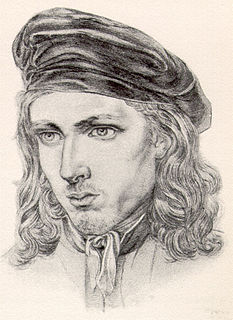
Karl Philipp Fohr, a brother of Daniel Fohr, was born at Heidelberg in 1795.
Frédéric Fregevize, a Swiss landscape painter, was born in Geneva in 1770, and died there in 1849. He lived for a long time in Berlin, and was elected in 1820 to membership of the Academy; he returned to Geneva in 1829, and went to Dessau in 1839. The Berlin National Gallery contains views painted by him of The Lake of Geneva, and The Valley of the Rhone, near Geneva.

Johann Jakob Frey, a Swiss landscape painter, a native of Basle, studied principally in Italy, and his views of that country are much valued. From Egypt, whither he accompanied Professor Lepsius, he brought many excellent sketches of the pyramids, labyrinths etc. It is to be regretted that he was obliged to make but a short stay on account of his health. His painting of 'Chamsyn in the Desert,' in the possession of the Emperor of Germany, was produced in 1845, and is greatly admired. He died at Frascati, near Rome, in 1865. The Modern Gallery at Munich has his Two Memnons near Thebes.



















